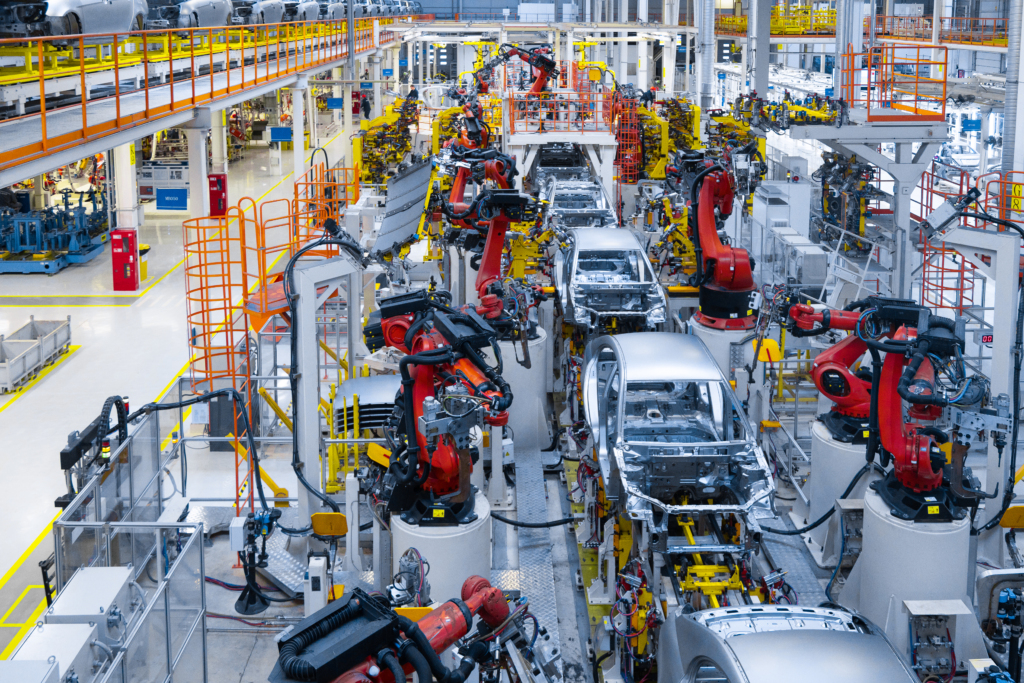Ford Motor Company is making perhaps its boldest bet since Henry Ford revolutionized manufacturing over a century ago. The automaker announced a sweeping $5 billion investment strategy that promises to deliver a game-changing electric pickup truck starting at just $30,000 by 2027, while fundamentally reimagining how vehicles are assembled in the process.
The Challenge That Sparked Innovation
The electric vehicle landscape has become increasingly dominated by one uncomfortable truth for American automakers: Chinese manufacturers like BYD have mastered the art of producing affordable EVs at a fraction of Western costs. While the average electric vehicle sold for approximately $47,000 in June 2025, many Chinese models retail between $10,000 and $25,000. This stark reality forced Ford CEO Jim Farley to confront a critical question: How could Ford compete without compromising American jobs or manufacturing quality?
“We took a radical approach to a very hard challenge: Create affordable vehicles that delight customers in every way that matters – design, innovation, flexibility, space, driving pleasure, and cost of ownership – and do it with American workers,” Farley explained during the announcement at Ford’s Louisville Assembly Plant. His acknowledgment was refreshingly candid: “We have all lived through far too many ‘good college tries’ by Detroit automakers to make affordable vehicles that ends up with idled plants, layoffs and uncertainty.”
The Skunkworks Solution
Ford’s answer came from an unlikely source: a secretive California-based team that operated with such independence that even Farley’s CEO badge couldn’t initially grant him access to their building. This skunkworks operation, led by former Tesla executive Alan Clarke and staffed with talent poached from EV rivals Tesla and Rivian, embodied what Farley called “the speed, innovation and first-principles thinking” needed to solve Ford’s affordability challenge.
The team’s mandate was clear: combine Ford’s 122 years of manufacturing expertise with startup-level innovation to create something entirely new. The result is Ford’s Universal EV Platform and Universal EV Production System, technologies that promise to transform both what Ford builds and how the company builds it.
Revolutionary Manufacturing Meets Practical Design

The centerpiece of Ford’s strategy is a midsize, four-door electric pickup truck that challenges every assumption about what an affordable EV can deliver. With a targeted starting price of $30,000, this vehicle positions itself not just as a competitive electric truck, but as a compelling alternative to gasoline-powered vehicles across the board. Consider the context: Ford’s current F-150 Lightning starts around $50,000, the Chevrolet Silverado EV commands similar pricing, Tesla’s Cybertruck exceeds $62,000, and even Ford’s gas-powered Ranger begins at $35,000.
The engineering specifications reveal Ford’s ambition to redefine expectations. The new truck promises acceleration matching the Ford Mustang EcoBoost while offering passenger space comparable to a Toyota RAV4. This combination of performance and practicality extends to innovative storage solutions, including both a traditional truck bed and a front trunk, maximizing utility in a midsize package.
Perhaps most importantly, the vehicle incorporates home backup power capabilities, able to keep a household running for up to six days during power outages. This feature transforms the truck from mere transportation into essential infrastructure, particularly valuable as extreme weather events increasingly stress electrical grids.
The Manufacturing Revolution
Ford’s Universal EV Production System represents more than incremental improvement; it constitutes a fundamental reimagining of vehicle assembly. Moving beyond the traditional moving assembly line concept that Ford pioneered, the new system resembles tree branches, allowing workers to assemble vehicle components separately before combining them at the final stage.
This approach delivers multiple advantages. Assembly times decrease by approximately 15 percent, enabling both lower per-unit costs and higher daily production volumes. Worker safety improves significantly as the system reduces instances requiring workers to turn, twist, or bend during parts installation. The manufacturing process itself becomes more flexible, supporting the production of multiple vehicle types on the same line.
The platform’s efficiency gains extend to the vehicles themselves. Ford’s new architecture reduces total parts count by 20 percent while eliminating more than 4,000 feet of wiring compared to conventional designs. These simplifications translate directly to lower manufacturing costs and reduced complexity throughout the vehicle’s lifecycle.
Battery Technology and American Manufacturing
Central to Ford’s strategy is the decision to manufacture prismatic lithium-iron-phosphate batteries domestically. The company is investing $3 billion in its BlueOval Battery Park Michigan facility, making Ford the first automaker to produce these advanced battery cells in the United States. This investment addresses both supply chain security and cost efficiency, as LFP batteries eliminate expensive cobalt and nickel while delivering comparable performance.
The new battery design serves double duty as a structural component, functioning as the vehicle’s floor while reducing overall weight and complexity. Ford claims this approach delivers equivalent range to current expectations using batteries with one-third less capacity, a remarkable achievement in energy density and cost optimization.
Jobs and Economic Impact
Ford’s commitment extends beyond technological innovation to substantial job creation and retention. The company is creating or securing nearly 4,000 jobs across its Louisville Assembly Plant and Michigan battery facility. At Louisville specifically, Ford is retaining 2,200 existing positions while investing almost $2 billion in facility upgrades to support the new truck’s production.
This employment strategy directly counters concerns about automation eliminating manufacturing jobs. Instead, Ford is demonstrating how advanced manufacturing can create high-skilled positions while maintaining American production capacity in an increasingly competitive global market.
Competitive Landscape and Market Timing
Ford’s announcement arrives amid significant headwinds for the electric vehicle industry. The current political climate includes efforts to roll back EV-promoting policies, while consumer adoption faces challenges from charging infrastructure limitations and price sensitivity. However, Ford’s focus on affordability addresses the primary barrier cited by potential EV buyers.
The competitive landscape includes several manufacturers pursuing similar strategies. EV startup Slate, backed by Amazon’s Jeff Bezos, targets mid-$20,000 pricing for its electric pickup. Tesla continues promising a cheaper model, with production supposedly ramping up in late 2025. Even traditional competitors like Chevrolet are reviving affordable options with the return of the Bolt nameplate.
Platform Strategy and Future Expansion
The Universal EV Platform’s true potential lies not in a single vehicle but in supporting an entire family of electric models. Ford has indicated the midsize truck will serve as the foundation for multiple SUV variants and potentially even a sedan, maximizing the platform’s development investment across diverse market segments.
This strategy mirrors successful approaches from other manufacturers, spreading engineering and tooling costs across multiple models while achieving economies of scale in component procurement and manufacturing processes. The platform’s flexibility enables Ford to respond quickly to market demands without extensive re-engineering efforts.
Learning From Past Mistakes
Ford’s current EV efforts carry lessons from previous attempts. The F-150 Lightning, despite initial excitement and innovative features, has struggled with profitability. Similarly, the Mustang Mach-E has faced challenges converting engineering excellence into financial success. A planned large electric SUV was canceled in 2024, highlighting the difficulties of scaling EV production profitably.
These experiences inform Ford’s current approach, emphasizing sustainable profitability from launch rather than market share at any cost. The company’s focus on manufacturing efficiency and cost control reflects hard-learned lessons about the importance of unit economics in the competitive EV market.
The Road to 2027
Ford’s timeline calls for the new truck to reach customers in 2027, providing roughly two years to finalize development, retool manufacturing facilities, and scale battery production. This schedule is aggressive but achievable given the platform’s development timeline and Ford’s manufacturing expertise.
The success of this initiative will likely determine Ford’s competitive position in the evolving automotive landscape. If successful, the Universal EV Platform could establish Ford as a leader in affordable electric vehicles while proving that American manufacturing can compete globally on both cost and innovation.
A Defining Moment
Jim Farley characterized the announcement as a potential turning point for the automotive industry, noting that professionals are “lucky if we get to work on one, maybe two projects to really change the face of our industry.” The combination of radical manufacturing innovation, strategic American job creation, and affordable EV technology positions Ford’s initiative as exactly such a project.
Whether Ford can execute this ambitious vision remains to be seen. The company faces significant technical, financial, and market challenges in delivering on its promises. However, the fundamental approach—combining startup innovation with established manufacturing expertise while prioritizing affordability and American jobs—provides a compelling blueprint for competing in the global EV market.
Ford’s $5 billion bet represents more than investment in new products; it constitutes a wager on American manufacturing ingenuity’s ability to adapt and thrive in an rapidly evolving industry. The stakes could not be higher, and the potential rewards extend far beyond Ford’s corporate success to encompass the future of American automotive leadership.












